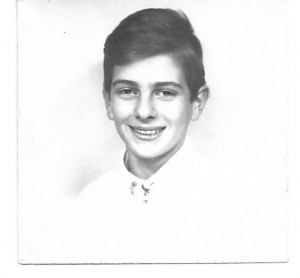 It is difficult for me to say what the adults in my world were doing. They were probably getting their own lives together, working, loving, arguing, doing the thousand little things involved in living, and recovering from the experiences through which they had all lived so recently, but I had no idea of specifics. I was too involved in my own life at the time, which, while not blissful, was indeed quite happy, and much of it revolved around school and my friends, the Moskowitz brothers, Gerard and Helmut.
It is difficult for me to say what the adults in my world were doing. They were probably getting their own lives together, working, loving, arguing, doing the thousand little things involved in living, and recovering from the experiences through which they had all lived so recently, but I had no idea of specifics. I was too involved in my own life at the time, which, while not blissful, was indeed quite happy, and much of it revolved around school and my friends, the Moskowitz brothers, Gerard and Helmut.
Schoolwork, actually homework, extended through the weekends and often involved collecting photographs to be pasted into our notebooks illustrating places and countries we had studied in our geography class. This was great fun, as none of us had photographs of these places, and we therefore had to collect travel brochures available only at travel agencies. These (possibly because they found us cute), the travel bureaus personnel let us have with pleasure. Most of these travel agencies were located on the main artery cutting through the heart of Brussels (Brussels really was heart-shaped in those days!), which changes its name three times along its length. It had crowds, many stores, movie theaters, sidewalk cafes and “brasseries,” restaurants serving mostly beer and choucroute (boiled sauerkraut and sausage), and it was a fascinating place for three boys to be walking on a Sunday afternoon collecting travel brochures. However, travel brochures were not all we collected. We also collected cigar bands, which in those days (when many men still smoked cigars), were quite ornate, and could be found merely by watching the ground as we walked. Naturally, because we were practiced “collectors,” we knew which of these cigar rings were more “valuable” than others, and in the process we also helped keep the boulevard somewhat cleaner. There was also a third collection taking place, one which didn’t involved quality as much as quantity.
In those days, in the mid-1940’s, there were still many men in Brussels wearing boaters, the ubiquitous, flat straw hats of the 1920’s and 1930’s. Now, their numbers much diminished, as we walked along the avenue collecting travel brochures and cigar rings, we also “collected” boaters. This didn’t mean that we removed boaters from the heads of their wearers, but that we “marked” and counted them. Each time one of us saw a boater, he’d yell, “paillasson!” (then French slang for boater) before any of the other boys could do so, made a fist, extended its thumb, licked the front of it, and touched the palm of the other hand, while remembering what its number was in our count for the day, the aim being to count more boaters than the other boys in our small group. Usually, by the time we reached our destination, we had forgotten our counts, but that didn’t matter. It was the process that mattered, and when we got home, tired and happy, we still had to cut up our travel brochures and paste the photos into our geography notebooks. Odd as this may seem today, we never questioned why we did the things we did. They were traditional, much like the arrival of “hannetons” or cockchafers in boys’ classrooms every three years. It may not sound like much today, but then it was great fun.

Ok, I bite. What’s a hanneton? Or cockchafer?
Ah, daughter of mine, that will be explained tomorrow!
Pop-pop